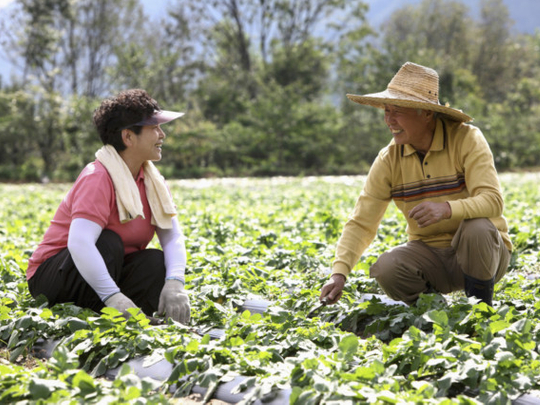
Visitors to South Korea may get the impression that the country’s most popular agricultural produce is cabbage, which is used to make kimchi, a side dish enjoyed with almost everything that comes on the table.
Kimchi exists in numerous variants, and prices vary greatly. However, while it is a staple, kimchi’s economic significance for Korean agriculture is small. Rice is the dominant crop and other important commodities include beef, with barley, fruits, chicken, fish, milk and cabbage in smaller volumes.
The sector, which has been in decline since the country embarked on industrialisation in the 1960s, today contributes less than 3 per cent to the gross domestic product — down from more than 30 per cent nearly five decades ago, when the majority of South Koreans were farmers.
Rice is king
Korea’s agricultural output last year was $42 billion (about Dh154 billion), lower than Japan’s already zombified farming industry at $48 billion. Rice continued to be the single-largest item, with $7.8-billion worth produced.
“The amount of rice produced dropped from 2011, but its total value increased slightly as the average price of rice rose,” the Korean Ministry of Agriculture, Food and Rural Affairs stated in a press release issued earlier this year.
Rice was followed by meats such as beef, which saw a total output of $3.2 billion last year. The country’s output of chicken dropped by 4.4 per cent to $2 billion, though it continued to be the fourth-largest item, according to the ministry. The country’s output of eggs plunged by 12.4 per cent on year to $1.3 billion.
Decline of agriculture
Agriculture accounts for between 6 and 8 per cent of South Korea’s overall workforce, and more than half of its food requirements, including animal feed, corn and wheat, are met with imports today.
Several free trade agreements and South Korea joining the World Trade Organisation in 1994 were a blow to the sector. The most significant of pacts was the Korea-US Free Trade Agreement, which came into force in 2011 despite protests in South Korea. “This agreement has done severe damage to the farm sector,” Doo Bong Han, Professor of Food and Resource Economics at Korea University, says in a study on the impact of several trade agreements on South Korea’s agriculture. “The sector now loses $626 million in production value annually. Estimates by the government predict that 45 per cent of Korean farmers will be displaced.
“It is important that South Korea finds a balance between trade liberalisation and the public value of agriculture,” Han adds.
Organic farming
Small farmers have resorted to ecologically sustainable farming, which involves organic farms and progressive farmer-consumer cooperatives.
Such programmes are supported by the agriculture ministry, which stated in its Work Plan 2013 that “a sustainable agricultural industry is to create economic value, invigorate rural communities and protect the environment”.
Many organic farms and gardens have popped up in rural communities with different specialisations. The larger of these are Hansalim and the Korean Women Peasants Association (KWPA).
Hansalim, with 2,000 farmers and 380,000 consumer members, produces healthy, organic food and each year farmers select what and how much they will produce. It focuses on the local market to avoid the environmental impact of shipping. KWPA operates 26 producer communities throughout the country, and each farming entity supplies a dozen households or more with organic produce. It is trying to increase consumption of native agriculture, defend the rights of small-scale women farmers and preserve the cultural heritage of native seeds.






